Breaking Off a Small Bite: Is This a Choking Risk?
- Why longer pieces of food are safer for early eaters to pick up
- What happen when your baby bites off a small piece of the longer piece of food
- What to do when you baby takes a small bite and how to lower choking risk

LISTEN TO THIS EPISODE
Episode Description
What if your baby bites off a small piece of food from the adult pinky sized shape of food you offer? Is this small bite a choking risk? In this episode we explore what to do when your baby bites off a piece of food and you are worried the baby is going to choke.

Other Episodes Related to this Topic
- Episode 6 - Safe Food Sizes for Baby-Led Weaning
- Episode 194 - BLW Food Size: Why Do Early Eaters Need Big Pieces of Food? with @msdawnslp Dawn Winkelmann, MS, CCC-SLP
- Episode 254 - How Babies Learn to Chew and Swallow with Dawn Winkelmann, MS, CCC-SLP @msdawnslp
Links from Episode
- Baby-Led Weaning with Katie Ferraro program with the 100 First Foods™ Daily Meal Plan, join here: https://babyledweaning.co/program
- Baby-Led Weaning for Beginners free online workshop with 100 First Foods™ list to all attendees, register here: https://babyledweaning.co/baby-led-weaning-for-beginners

Latest Episodes
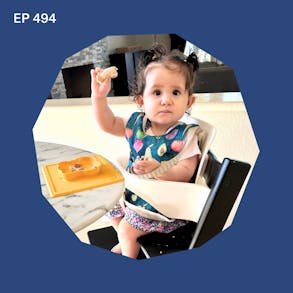

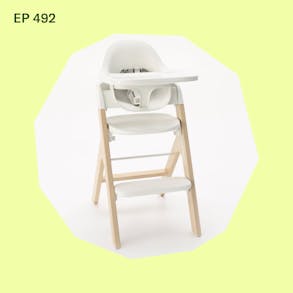
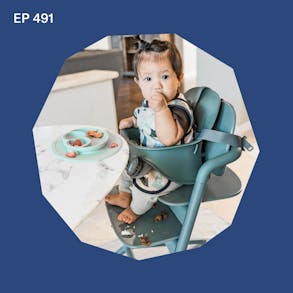
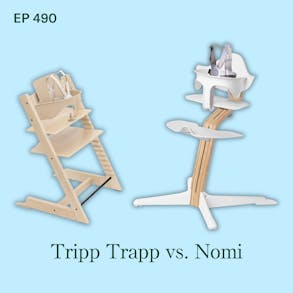
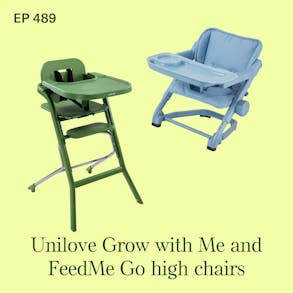
0 (0s):
If you are a type A super planner like me, you love getting organized about what Solid Foods your baby ISS going to eat. I have a free feeding guide for you. You're gonna love this one. It's called the Baby led weaning Pantry Planning Guide. It's a 10 page checklist divided by categories of foods, many of which you probably already have on hand. Plus there's tips in there on how to modify those foods so there's safe for your baby. You can download the baby led weaning pantry planner for free. If you go to my website, baby led weaning dot co slash resources. Again, that's baby led weaning dot co slash resources. Click on the pantry planner and it's free. Are you trying to squeeze the starting solid food stuff into your already busy schedule? Well, I have an all-in-one done for You solution that's going to take the guesswork out of feeding your baby. My online program is called Baby Led Weaning with Katie Ferraro contains all of my baby led weaning training videos, the original hundred First Foods content library, plus a hundred day meal plan with recipes like the exact sequence of which foods to feed in which order.
0 (51s):
So if you wanna stop trying to piece all this feeding stuff together on your own, I would be honored if you would join me inside of the program. You can get signed up at baby led weaning dot co slash program. And while it certainly can be scary when you have that pinky sized piece of food that your baby now just part of it's disappeared, oh my gosh, it's in their mouth. What are they gonna do with it? Remember, your baby is naturally equipped with a gag reflex. This is a protective mechanism. And when that small piece of food gets in their mouth, as long as the baby is the one driving the eating experience, that's baby led weaning in action. And you can trust that your baby knows what to do or slash and that they have the capacity to figure it out because they're still learning how to eat.
0 (1m 36s):
And if you wait until they're ready and they're positioned safely in the high chair and you've prepared that food properly, they will not joke on food. Hey there, I'm Katie Ferraro, registered dietician, college nutrition professor and mom of seven specializing in baby lead weaning here on the baby led Weaning with Katie Ferraro podcast. I help you strip out all of the noise and nonsense about feeding, giving you the confidence and knowledge you need to give your baby a safe start to Solid Foods using baby led weaning. Hello and welcome back. Today we're talking about what to do if your baby bites off a small piece of food, Is This, a Choking Risk.
0 (2m 18s):
And if you've been wondering that 'cause you learn about baby led weaning and you're like, wait a minute, you're supposed to offer these pieces of soft food that are about the size of your adult pinky finger, but when the baby brings it up and puts it in their mouth and they bite off a small bite, are they going to choke? Because if small pieces of food for earlier eaters are not ideal because they're a choking hazard, what do you do when the big piece of food becomes a small piece of food in the baby's mouth as they're learning how to eat? If this is ever baffled or perplexed you, please do not worry. It is actually one of the most common questions that parents ask on my free online workshop. So I teach an online workshop called Baby led weaning FOR BEGINNERS. It's 75 minutes long, it's all about how to start Solid Foods.
0 (2m 60s):
And there's a question box in there and we get the same questions over and over and over again. So I have this like massive document of all the answers and I was recently tallying up. We have an AI tool that helps send those out, but I actually write all the answers myself and I was looking at the stats and that is like top five question for sure that parents have. So if you haven't taken that workshop yet, I highly suggest that you do. It's called Baby led weaning FOR BEGINNERS. You can sign up at baby led weaning dot co slash workshop. You can take that right now, later today, tomorrow when your baby's napping. Whenever you have time, everybody on that free training gets a copy of my 100 First Foods list so that you'll never run out of ideas of foods your baby can eat.
0 (3m 40s):
Again. To sign up for that workshop, it's at baby led weaning dot co slash workshop. I like to start out each of these mini training episodes with a baby led weaning tip of the day. And we're gonna be talking about what to do with the smaller pieces of food. You'll learn in today's episode that if it's inside the baby's mouth, You don't need to do anything. But for the small pieces of food that fall off around the plate in the bowl, parents are sometimes like, should I pick that up? Should I put it back in the bowl? Should I put it in the baby's mouth? No, do not put it in the baby's mouth. Putting anything in your baby's mouth including a spoon, could be a potential choking hazard. But one thing that I'll do with the soft pieces of food, especially if I'm making like fritters or pancakes or you know, these nice soft pieces that our babies can pick up and feed themselves if they're soft, they fall apart sometimes too.
0 (4m 21s):
So when they fall apart, what I'll do is I'll actually take that soft food and just press it into the bowl of one of the tiny spoons.
EasyPeasy (4m 28s):
So the tiny spoons are the little baby led weaning spoons created by the company. Easy peasy. So their feeding expert created that baby led weaning spoon called the tiny spoon. And your baby. We wanna practice have having them bring that spoon to their mouth. But if the what you're putting on the spoon is really thin and it falls and it slides off easily, your baby's gonna get frustrated. But sometimes those finger foods, just put it in the bowl of the spoon and let your baby also practice bringing that spoon to their mouth. If you wanna check out some of the easy peasy feeding gear, those tiny spoons are perfect for your baby six to 12 months of age. They're designed for baby led weaning. I have an affiliate discount code Katie 10 that works for a discount@easypeasyfun.com if you want to check out some of that gear.
0 (5m 8s):
So take those smaller pieces of food and put 'em in the bowl spoon and put that spoon in your baby's hand. But don't put them directly in your mouth. Hang tight. In this episode though, I'm gonna share exactly what you do once your baby does bite off that small piece of food in their mouth. 'cause I know you will be freaking out. I wanna start with a quick story that when I was starting solid foods with my oldest baby, I mistakenly thought like a lot of parents do that the smaller the food, the better. Meaning that if I cut the food up really small that it will be safe for the baby to eat. And we know with baby led weaning that the opposite is actually true. Small pieces of food can be a potential choking hazard for early eaters. Now, small pieces of food are problematic for two reasons.
0 (5m 50s):
First of all, your baby who is just starting out with Solid Foods at six or seven months of age, they don't have their pinch or grasp yet. So they can't use their thumb in their forefinger to pick up small pieces of food. So even if they could get a small piece of food in their mouth by themselves, which we know they can't. So the implication there is that someone else is putting that food in their mouth, that very small piece of food is the exact size that could potentially occlude their airway. So with baby lid weaning, we actually start out with longer pieces of soft foods generally shaped about the size of your adult pinky finger. And the rationale there is that the baby can use their whole hand or their Palmer grasp since they don't have their pi or grasp yet, and they'll rake or scoop the food up and into their mouth. And the longer piece of food means that some of the food will be inside their little fat baby fist, but an inch or so of the food will be poking up above their fist.
0 (6m 37s):
And that's the part that they then use their gums to bite off. Now you might be thinking, wait a minute, my baby can't bite food because they don't have any teeth yet. your baby does not need teeth to start. Solid Foods, some of your babies won't even get teeth until after the one year mark. Okay? But we start Solid Foods around the six month mark. And again, babies do not need teeth to start Solid. Foods having or not having teeth is not a prerequisite to starting solid foods. So they use their gums to bite that food off. And if you're interested in learning more about how babies learn to chew and swallow, I did a whole episode called How Babies Learn to Chew and Swallow. That's with Dawn Winkelmann, she's a speech language pathologist. She's also the feeding expert for Easy Peasy, the one who created those tiny spoons and some of their other feeding gear.
0 (7m 19s):
And that's back in episode 2 54, all about the mechanics of how babies learn to chew and swallow. In this episode, I wanna talk about this phenomenon of, okay, if the small piece of food is a choking hazard and my baby starts with a longer piece, when they get that smaller piece in their mouth, doesn't that mean they're going to choke on it? And the answer is no. If you are waiting until your baby is six months of age or six months adjusted age if born prematurely, and when they're demonstrating all of the other reliable signs of readiness to eat your baby who's six months of age, who picks that food up and brings it to their mouth, they will not choke on that food if three things are met. Okay? So the three criteria to prevent choking is we're waiting until the baby's really ready to start.
0 (8m 0s):
So we mentioned being six months of age or six months adjusted age, showing those other reliable signs of readiness to eat, namely that the baby can sit relatively on their own with good head and neck control and the trunk strength to support a safe swallow. So that's the number one way we help prevent choking risks. The number two way is having the baby seated properly in the height chair. And that means that your baby's feet will be resting flat on a solid foot plate. Their back will be straight. So if you think about the positioning, we want their waist at a 90 degree angle, the baby's knees at a 90 degree angle and their ankles at a 90 degree angle. So if you wait until the baby's ready and you position them properly in the highchair, those are ways one and two that we can reduce choking risk. But the third way is to ensure that the food is properly prepared. And as a registered dietician specializing in baby led weaning, I spend all of my time showing families how to make a hundred different foods safe for their baby to start Solid Foods.
0 (8m 46s):
And all of the hundred foods on the hundred First Foods list you could make for your baby in week one of starting solid foods. So there's no foods that you have to, you know, wait until they're a certain age four. 'cause we can modify almost any food within reason to make it safe for an early eater to eat. And generally those foods, especially for the early eaters in my program, we call it phase one of baby led weaning, which is the first eight weeks of baby led weaning. your baby is going to stick to single solitary foods that are shaped about the size of your adult pinky finger. Now we're gonna do starchy foods and fruits and vegetables. We do meats, we do plant proteins, we do allergenic foods. There are lots of different types of foods and tastes and textures and nutrient mixes. But for the most part we're focusing on those single foods and they're shaped about the size of your adult pinky finger.
0 (9m 31s):
When your baby uses that whole hand or their Palmer grasp and they pick that food up and they bring it to their mouth, as I mentioned, they will munch off a part of that and parents think, oh my gosh, well they're gonna choke on that 'cause they've never had anything in their mouth except infant milk. But if the baby is the one being allowed to drive the eating experience, that's baby led weaning in action, your baby's gonna take that smaller piece of food that broke off in their mouth, they're gonna move it around their mouth, they're gonna maneuver it, they're gonna manipulate a little bit. If it goes too far back and they feel uncomfortable, they're naturally equipped with the gag reflex that's going to act as a protective mechanism and it's gonna help them move the food around their mouth and learn how to swallow food safely. But they don't learn it overnight.
0 (10m 12s):
Okay? And they need practice. So we say practice makes progress. That's why in phase one of baby led weaning, we like to see your baby eating Solid Foods one to two times a day. So at six and seven months of age, try to offer your baby Solid Foods one to two times a day.
Art Smartt and Who Arted (10m 25s):
Hey, we're gonna take a quick break, but I'll be right back. I'm Kyle Wood, host of Art Smartt and who arted from the moment I discovered podcast on my old iPod nano, I was hooked. I love learning about new things and I bet you do too. Art Smartt gives listeners an easy entry point to understand the arts. Season one covered the elements and principles, and season two is giving a quick overview of different styles and movements and the ideas that shaped them. Every episode's just a few minutes to give you what you need and nothing you don't. So check out Art Smartt wherever you get your podcasts.
0 (11m 7s):
Then at the eight to nine month mark, when we move into phase two, that's when we start to do the combination texture foods and your baby will be getting their pinch or grasp at eight to nine months of age. We like to see your baby eating two to three times a day, and then ideally by 10 months of age, your baby is eating three times a day or whatever mid mixture of family's meal pattern with the ultimate goal of being by 12 months of age. Most of your baby's nutrition can be coming from solid food with a small amount coming from infant milk or breast milk if you continue to breastfeed beyond the one year mark. So as long as your baby is the one who is allowed to feed themselves, they will naturally regulate the pace of eating and they will be able to manage the size of the food in their mouth. I really would encourage you not to skip days, okay?
0 (11m 48s):
Babies need a lot of practice to get proficient at learning how to chew and swallow foods. So we certainly wanna make sure that we're starting out with appropriate easy to handle foods again, that are about the length of your adult pinky finger. your baby is skilled at biting off a manageable piece, okay? And as long as that is a nice soft squishable food, it should be safe. Okay? When it comes to meats, I spend a lot of time inside of my program teaching about how to make meat safe. 'cause that's a real pain point for parents. But I always say, if you can shred the meat between your fingers and your thumb, then it's safe for your baby to eat with their gums. And if you would like to get instructional videos and recipes and ideas of how to make all of the hundred First foods safe for your baby at their different ages and stages, I have all of that inside of my hundred First Foods content library, which is inside of My program.
0 (12m 37s):
BABY led weaning with Katie Ferraro. That's the same program that also has my hundred First, Foods, Daily, Meal Plan. So if you don't even want to think about which food to feed your baby next, I did it all for you. In 20 weeks of meal plans with age appropriate recipes that move your baby through different texture categories, and you're gonna get a hundred foods in before they turn one. If you wanna check that program out, it's at baby led weaning dot co slash program. So what do you do when your baby bites off a small piece of food? First of all, take a deep breath. Know that it's natural for your baby to bite off the small piece. One of the benefits of having that longer piece of food in their hand is that when they put it in their mouth and they start sucking on that food before they bite it, if it's uncomfortable or they don't like it, or if some of too much of it goes in their mouth, they can actually extract it themselves.
0 (13m 22s):
They'll use their hand to pull that food out. So don't freak out if your baby pulls food outta their mouth or spits food outta their mouth. Sometimes parents will say, oh, well the baby's spitting food out of their mouth. That must be an indicator that my baby's not ready for that food yet. Or sometimes they'll, they'll look up like old fashioned lists of signs of readiness to eat and they'll say, oh my gosh, well my baby, maybe they still have their tongue thrust reflex. Okay? The tongue thrust reflux, which is also called the extrusion reflex. That's a protective reflex that earlier babies have before they start Solid Foods. It kind of hearkens back to an era when feeding experts and medical professionals used to tell parents to start Solid Foods at three and four months of age. That's long before what we now know to be a safe period to start Solid Foods.
0 (14m 3s):
And if you were to offer baby something besides infant milk at three and four months of age, heck yeah, they're going to push it out from the back of their mouth because that's their protective mechanism kicking in, saying, I'm not safe to have anything back there. But by the time they're six months of age and sitting on their own with that great head and neck control and trunk strength, they're gonna push food outta their mouth. But it's just because they don't know what to do with it yet. So it's just part of that learning how to eat process just like gagging is okay, when your baby is gagging on food, hopefully by now you know that that's a natural and necessary part of learning how to eat. You do not need to intervene when your baby is gagging, and you do not need to intervene when your baby bites off a small piece of food because if they're truly ready to start solids and they're positioned properly in the high chair and you prepared that food safely, those three criteria, your baby is going to be just fine.
0 (14m 52s):
And if they need to, they're gonna chew or swallow or spit out the food that they can't handle. So trust your baby's ability to self-regulate during feeding. Now, of course, you are the caregiver, you are the guardian. You are responsible for that food and being sure that it is made safe. And if in the event your baby comes across or eats a food that is not prepared properly for them, or they're not seated properly in their highchair, or they're given or eat a food well before they're ready and they choke on that food, it's on you, the provider to know infant CPR. So I recommend that all parents who are starting solid foods taken infant refresher, CPR course, I know you took CPR like before your baby was born, but that was more than six months ago.
0 (15m 34s):
And I don't know about you, but I can't remember what I had for breakfast yesterday, let alone the particulars of a class that I took more than six months ago.
Online CPR Course (15m 41s):
So if you want to take an online CPR course, the one that I take every quarter and that I recommend, it's incredibly efficient. It's online, it's very comprehensive. My friend Brandon, who is a certified CPR instructor, teaches it. I always learn something new. It's already really affordable. But if you wanna get an extra $10 off, if you use the code, Katie 10, if you go to the website, bit lee slash blw thrive, it'll take you to that online CPR course. Again, the site is bit lee slash bw thrive. The code KD 10 will get you $10 off. Sign up for your infant refresher CPR course if you haven't already.
0 (16m 18s):
Choking is a very rare but real risk and knowing CPR can save your baby's life. So don't forget that your baby is learning about how to develop a lifelong relationship with food. They need to be the one who's in control of the eating paste. Allow your baby to trust their instincts, stay present and alert at mealtimes, but trust this process and know that your baby will know what to do with that smaller piece of food in your mouth. And don't forget that if you jump at your baby or you startle them or you lunge at them because you're freaking out when they're learning how to eat, you can cause a very harmless situation like maybe your baby's just gagging on food. You can actually turn that into a harmful choke because when we startle the baby, what do you do? If you're startled you, you suck air in, okay?
0 (17m 1s):
And you can actually cause that piece of food that they're trying to chew. You can cause that to actually get sucked into their airway and obstruct their airway and choke them. So you don't need to intervene. You can trust this process and your baby can do this. So Breaking, Off, a Small Bite of food, this is not a choking risk. This is how babies learn to chew and swallow. Thank you so much for listening. I'll put all of the other episodes that I mentioned and some of the resources that are related to this topic on the show notes page for this episode@blwpodcast.com slash 4 6 9. A special thank you to our partners at AirWave Media. If you guys like podcasts that feature food and science and using your brain, check out some of the podcasts from AirWave Media.
0 (17m 43s):
We're online at blw podcast if you're interested in this topic about Breaking Off, a Small Bite Is This, a Choking Risk. You might also be interested in episode six, which is all about Safe Food Sizes for Baby led weaning episode 2 54, which I mentioned early, how babies learn to chew and swallow. And then in episode 1 94, I interviewed speech language pathologist with Dawn Winkelmann about baby led weaning food size, and why do early eaters need bigger pieces of food? She explains more from the physiological side about how the baby's mouth works and why these longer pieces of food are ideal for early eaters. You can check those out. I'll actually link them to in the description for this episode. Thanks again for listening, and I'll see you next time
A Mindful Moment with Theresa McKee (18m 31s):
At a time when change is constant and we are pulled in far too many directions. We need a way to stay present to life and to increase our ability to remain calm, think clearly, and maintain our wellbeing. Many studies indicate mindfulness improves our mental, emotional, and physical health. On a mindful moment with Theresa McKee, you can learn how to practice mindfulness and enjoy its many benefits. Tune in for guided meditations and to hear tips and advice from some of the most respected experts in the fields of mental health and mindfulness. The world truly can be a better place. It all starts with a mindful moment.
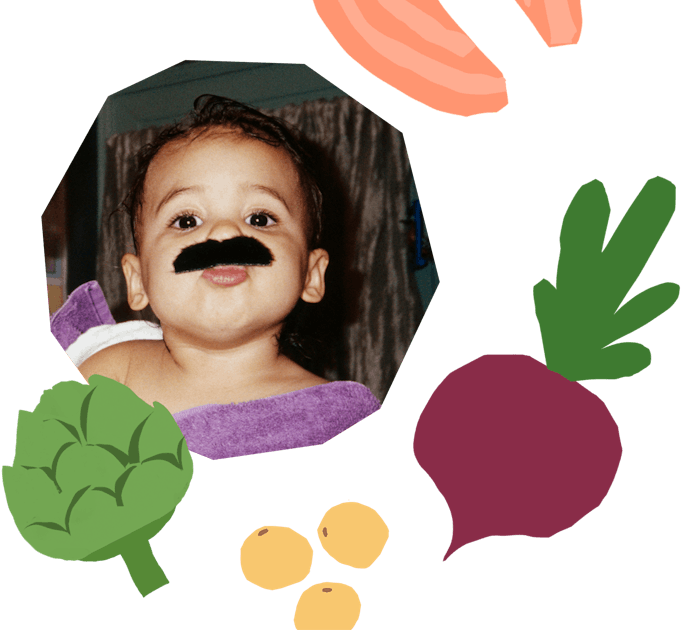
The Program Baby-Led Weaning with Katie Ferraro
A digital course & step-by-step guide for starting solid foods safely with baby-led weaning
 EXPERT-LED, PROVEN APPROACH TO EATING REAL FOOD
EXPERT-LED, PROVEN APPROACH TO EATING REAL FOOD CONCISE VIDEO TRAININGS TO MASTER BABY-LED WEANING
CONCISE VIDEO TRAININGS TO MASTER BABY-LED WEANING 100 FIRST FOODS DAILY MEAL PLAN WITH FOOD PREP VIDEOS
100 FIRST FOODS DAILY MEAL PLAN WITH FOOD PREP VIDEOS
Baby-Led Weaning for Beginners Free Workshop
Is your baby ready to start solid foods, but you’re not sure what to do? Register for this free online video workshop and learn how to give your baby a safe start to solid foods using baby-led weaning. Everyone on this free training receives a copy of Katie’s original 100 FIRST FOODS™ list. You can take this workshop right now, later today when your baby naps, or tomorrow…whatever works for you!
Get baby-led weaning recipes and tips delivered right to your email inbox.